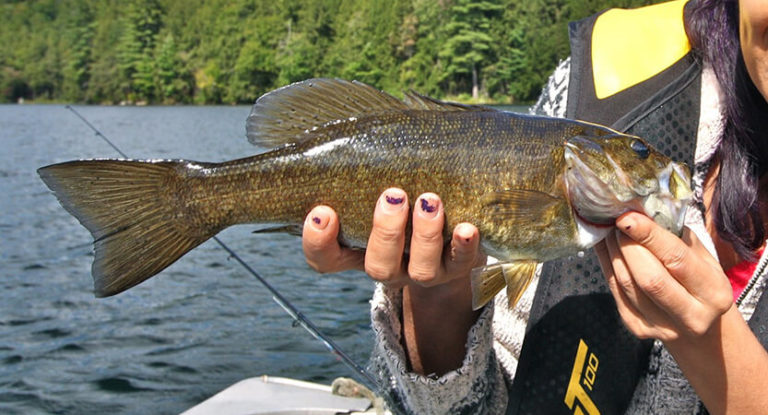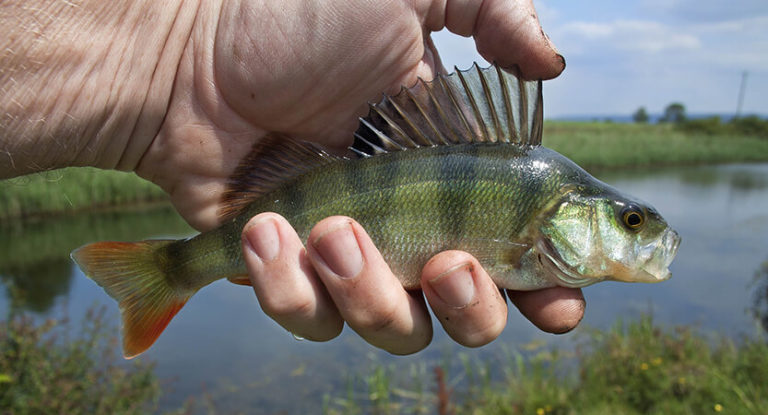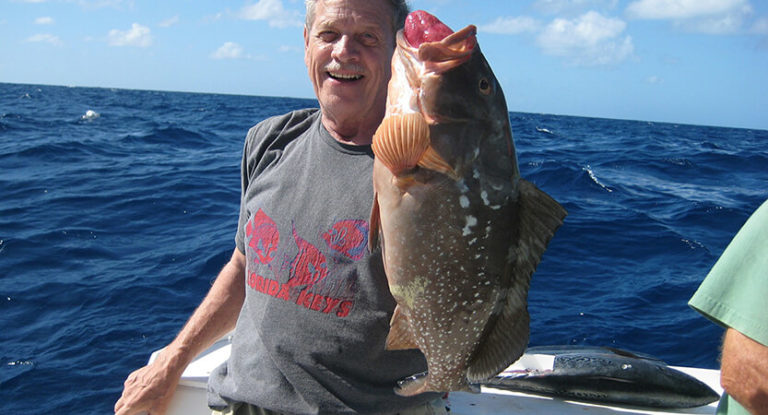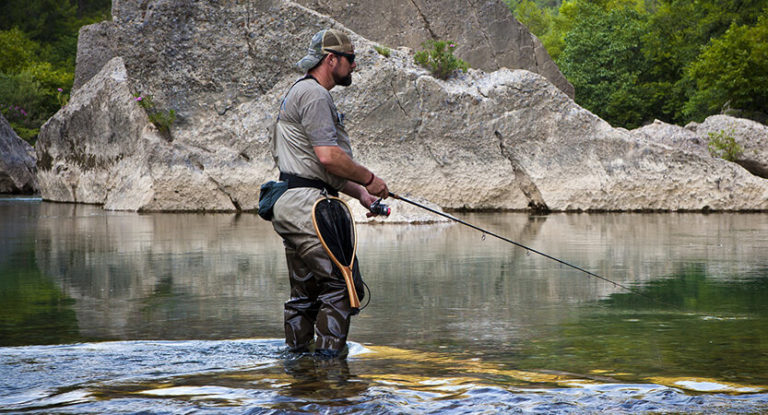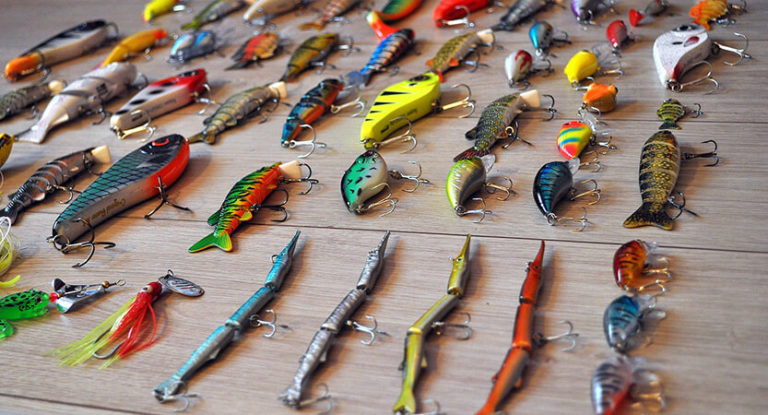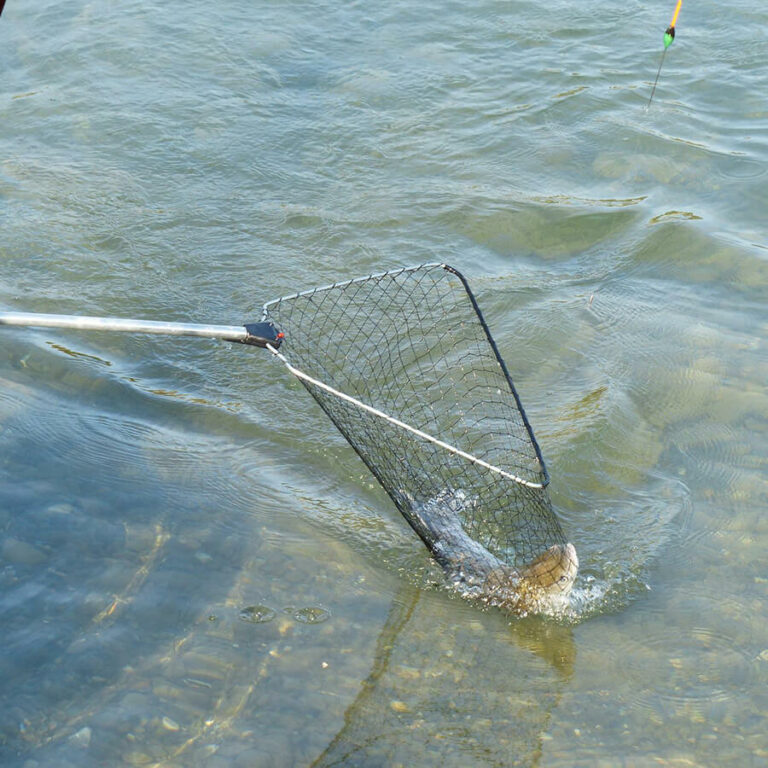Nowadays, a large number of unscared fish in a pond is a rarity, and getting a trophy specimen is a huge success. Therefore, trolling seems to be a more preferable option than traditional casting from the bank. In this way, you can get very solid specimens even under seemingly unfavorable conditions.
Today we will get acquainted with the fishing technique, not bypassing the basic principles of the selection of gear and related equipment. Contrary to popular belief, trolling is not as expensive as it is portrayed, but you will have to fork out decently in preparation for the first trip. But do not be upset: with the right organization, the costs are compensated by the joy of a good catch.
Here is an overview of the content of this tutorial, feel free to jump to any section you care about:
For more fishing instructions, take a look at these popular Trizily links: Best Baitcasting Reels, Best Fishing Lines.
- How To Choose A Spinning Reel (Complete Guide)
- How To Choose A Spinning Rod (Complete Guide)
- What Do You Need To Start Fishing (Complete Guide)
Understanding trolling
Trolling is a method of catching a predator from a self-propelled boat. Its closest relative is the rowboat fishing track. The trollingist does not need to pump the muscles with oars: the motor is responsible for the movement of the watercraft.
Posting (more precisely, towing) the bait is carried out by moving the floating craft (usually at low speeds). Usually, several similar gears are used based on powerful spinning rods loaded with artificial baits or (less often) an animal bait. Lures are fed at a sufficient distance from each other and at different depths in order to ensure a high fishing density and avoid tangle of gear.
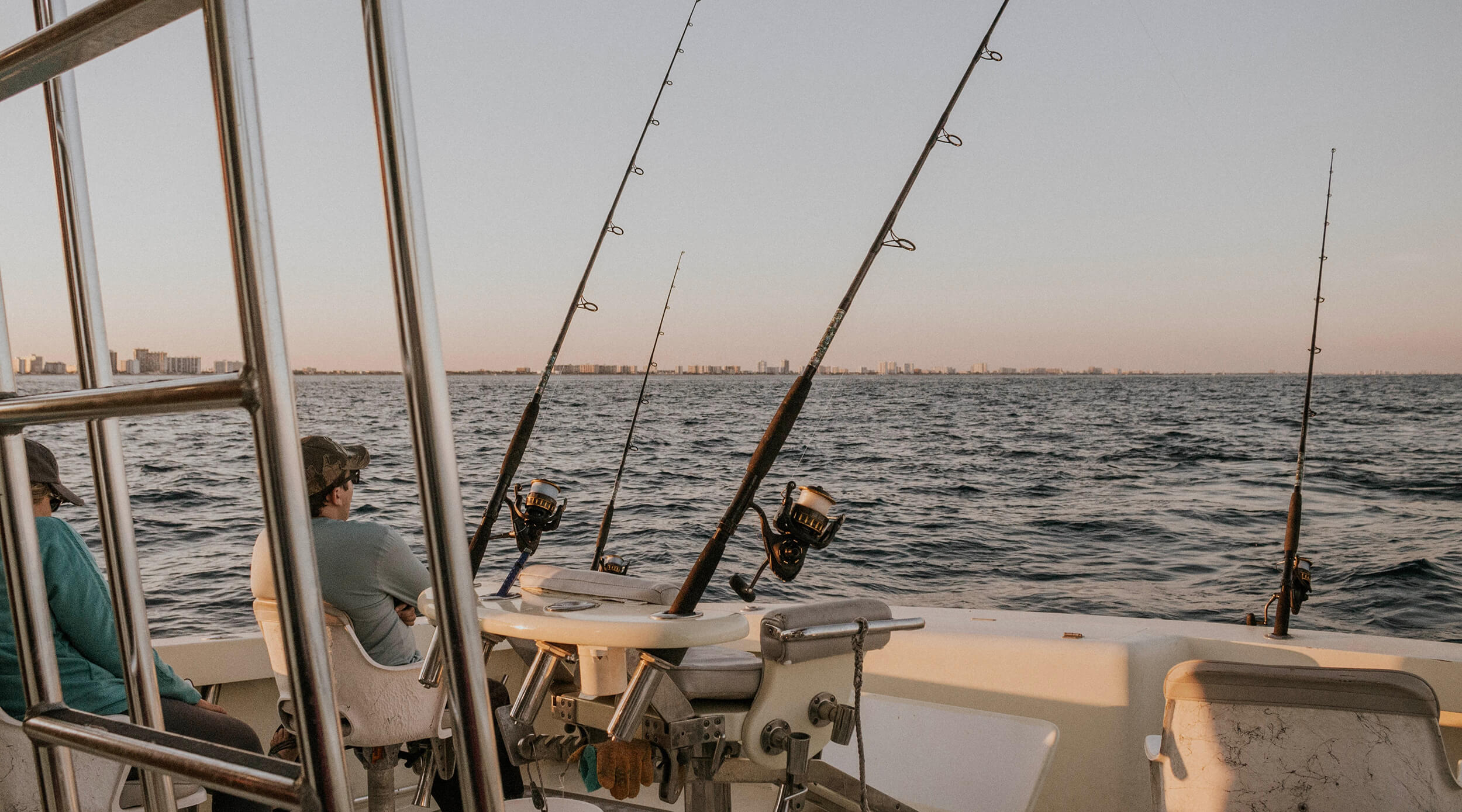
Trolling is the most common way of sea fishing. In such open spaces there is where to roam, so fishing is carried out from fairly high-speed boats. Sea trolling requires very powerful tackle, as very heavy and stubborn baits are used, which are carried out at considerable depths, and the size of the prey can be truly fantastic.
Until recently, freshwater trolling was on the verge of a ban: the fishery authorities did not welcome such fun. However, now it is allowed in almost all bodies of water, which is what anglers use.
Freshwater trolling is very specific. Fishing is carried out in relatively small water areas (lakes and reservoirs, shallow oxbows, edges along river beds and pits). The depths are not so significant and rarely exceed 5-6 meters. However, the nature of the bottom is sometimes unpredictable, so the risk of catching the bait is much greater (especially if fishing is carried out with a deepening to the bottom).
The trophies are mainly large pike perch and pike. However, the bait can be tempted by large asp, humpback bass, burbot or catfish.
Trolling equipment
When choosing gear and auxiliary equipment, you should focus on the conditions of a particular reservoir. As mentioned above, the purchase of equipment will require a decent financial investment.
All trolling equipment can be roughly divided into three broad categories:
- tackle and equipment (rods, reels, cords, lures);
- floating craft (usually a boat with a low-power motor);
- auxiliary equipment (echo sounder, navigator, downrigger and other additional arsenal).
The main requirement for all components is reliability, ease of use and unpretentiousness.
Tackle
The basis of the rig is a trolling (that is, a powerful spinning) rod. There may be several of them, since in this case, unlike casting fishing, the rod is in a special rack and is rigidly fixed. Trolling with one rod, for example, at the mouth of a small river, is at least irrational: it is simply a pity to burn fuel for this. However, the more spinning rods, the higher the likelihood of tangling the tackle, so a beginner should stop at one or two powerful “sticks”.
The reel should match the rod: powerful and durable, with a well-tuned friction – what if a catfish or a ten-kilogram pike will take the bait?
It remains to pick up a line with a high breaking load and the corresponding bait (more often – a deep-sea wobbler) – and you can go after the trophy predator. And now for more details.
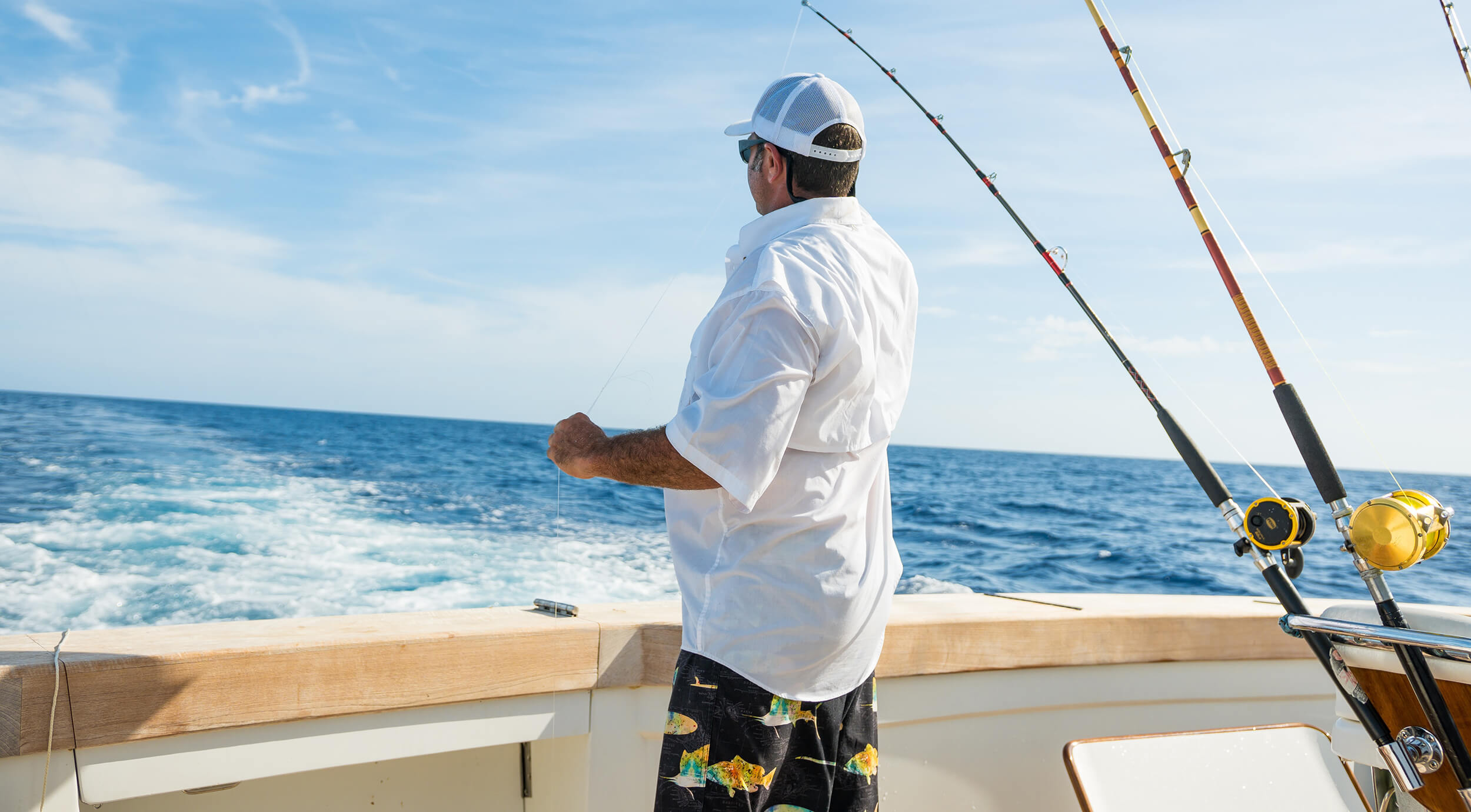
Rod
Trolling is not a delicate jig, the oversensitivity of the blank is not a matter of principle. The escort is carried out by the advancement of the craft, the animation is independent, the trophy is ideally self-hooking. This determines the specifics of the choice of the rod.
It is worth stopping the choice on a powerful blank, positioned as a rod for trolling fishing. The length of such spinning rods is small – 1.8-2.4 m. Longer sticks are used when fishing is carried out with three or more tackles (they must be diluted as much as possible to avoid entanglement).
It is worth talking about other parameters in more detail.
Material
Most spinning rods are made from carbon (graphite, CFRP), fiberglass and composite materials (mix of carbon and fiberglass). For coastal fishing, sensitive and light carbon blanks are definitely preferable, but sometimes they are not very suitable for trolling (they are inferior in reliability to fiberglass, and lightness and sensitivity are not needed here).
Therefore, it is rational to stop at a form made of fiberglass or composite, especially since they are significantly cheaper. There are also particularly reliable carbon fiber trolling blanks. They are almost perfect, but, unfortunately, they are in a fundamentally different price category.
Build
The action of the rod is determined by its flexibility. Fast action rods under load bend in the upper third (superfast – in the upper quarter), medium – up to half, slow – almost to the butt.
When fishing with trolling, overloads fall on the rod, therefore, it should work out the hooks with dignity, taking hits along the entire length. A huge load is assumed when biting. It would seem that a slow action rod is better.
However, on the other hand, the tackle is designed for self-setting, which implies high rigidity of the blank. But such a rod will simply break under a critical load, and at a decent speed (when fishing large water areas) it will rip the bait out of the fish’s mouth.
Therefore, medium or medium-speed spinning can be recommended as a universal option. If fishing is carried out at the bottom at considerable depths, a slow stick is more suitable, on the surface of a clean water area – a medium-fast one.
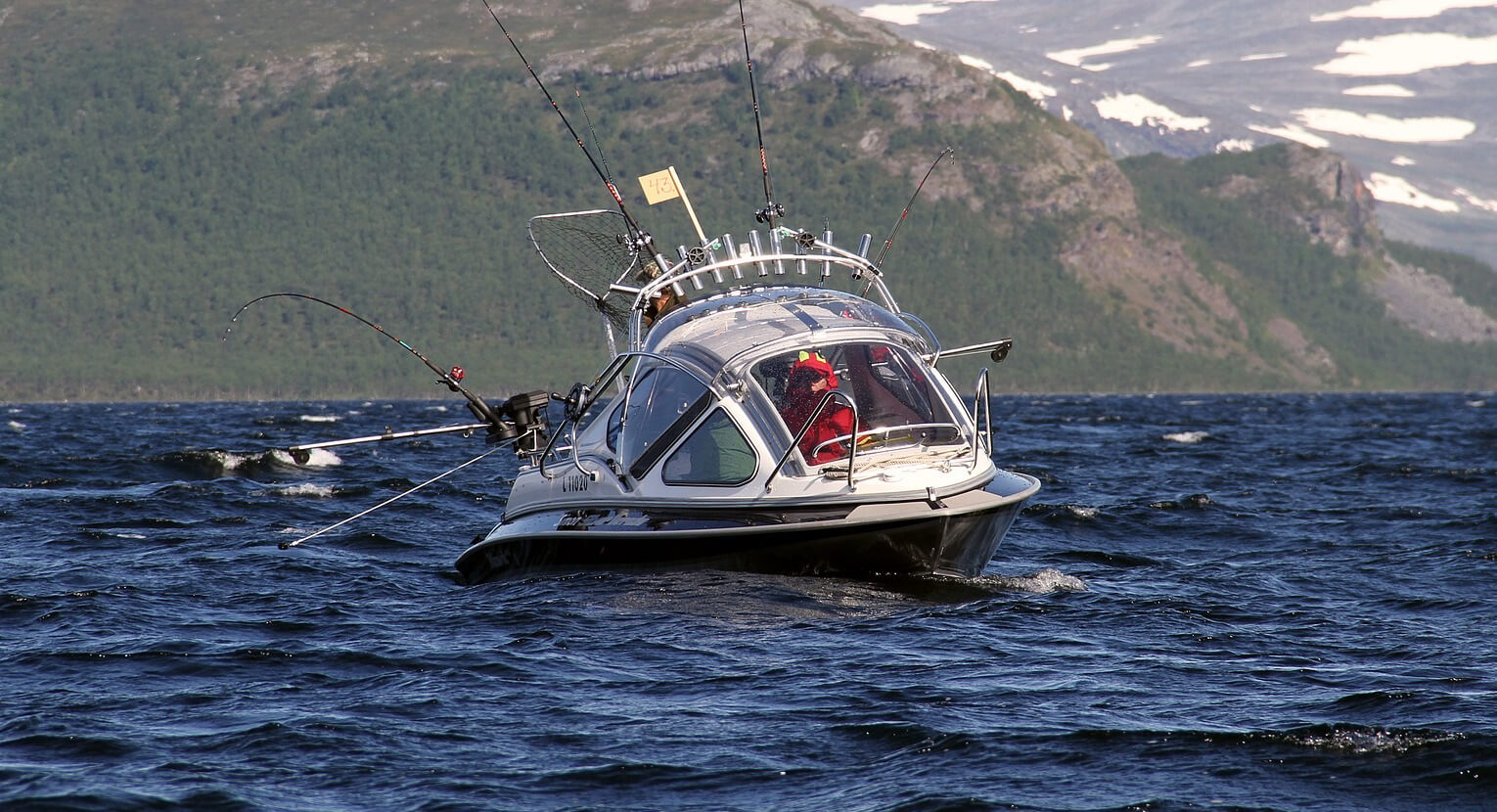
Test
The blank test should correlate with the weight of the bait. However, it should be borne in mind that even light baits equipped with blades and other accessories can provide very significant resistance during wiring. Moreover, the greater the depth and the higher the speed of movement, the greater the resistance.
For light trolling at shallow depths, they usually take forms with a dough of 20-50 grams. With increasing depths, the test increases to 50-80 grams. Heavy-duty rods with a test of up to 200 grams in tandem with especially stubborn lures are used extremely rarely in freshwater trolling, usually in the waters of very large lakes and floodplains of giant rivers (their main element is the sea).
Fittings
You should pay no less attention to the characteristics of the fittings:
- Rings . The rings should be as smooth as possible, preferably large in diameter, otherwise they will quickly clog. Material – high-strength steel alloys or titanium (unfortunately expensive). Attachment to the blank – uncompromisingly reliable, low, on three or more “paws”. The presence of ceramic inserts that minimize friction is essential. Cool rings on a frame with Sic inserts are produced by Fuji, but they are placed only on premium blanks made of high modulus carbon.
- The handle . The handle should be configured for comfortable play with two hands. The cork handle, ideal for coastal fishing, is not suitable for trolling: it quickly crumbles under load. Therefore, it is better to opt for more reliable artificial polymers, such as EVA or neoprene.
- Spool seat . Unambiguously metallic, without backlash and external signs of poor-quality performance. If a multiplier is used when rigging a spinning rod , the presence of a special trigger (trigger) is essential.
Reel
Here we come to the most expensive piece of trolling equipment. If in this type of fishing it is possible to do just fine with an “oak”, unpretentious and cheap fiberglass rod, then it will definitely not be possible to save on the purchase of a reel.
In fact, in principle, there are only two options here: cool power inertia and multiplier. The second option is more common.
Multipliers
In the overwhelming majority of cases, multiplier reels are used for trolling. Due to their power and simplicity of design, they are more reliable than inertialess ones, and you should not pay attention to their weight in these conditions. Their only drawback is the difficulty of laying the line evenly, but good models are devoid of this flaw.
Baitcasting reels are powerful and unhurried. They implement the principle of a winch: the movements during winding are more powerful. Most of the models are equipped with line counters: this is a fundamental point if you fish with several tackles with specified horizons, which is a common phenomenon in trolling.
There are two main types of multipliers. Lighter “soap dishes” are usually used in casting coastal fishing. If we take them for trolling, then only for the superficial, without relying on holds and record trophies like twenty-kilogram catfish.
The most acceptable are the so-called “barrels”. These are really cool powertrains, capable of handling any load, but they also cost accordingly. The crown of creation are cartoons that can change the gear ratio depending on the fishing conditions. The transmission coils are serviced in special workshops and cost like not the worst used cars.
Please note that the multiplier should be matched to the arm: there are special right- and left-handed models. The line capacity of the spool is from 100 m.
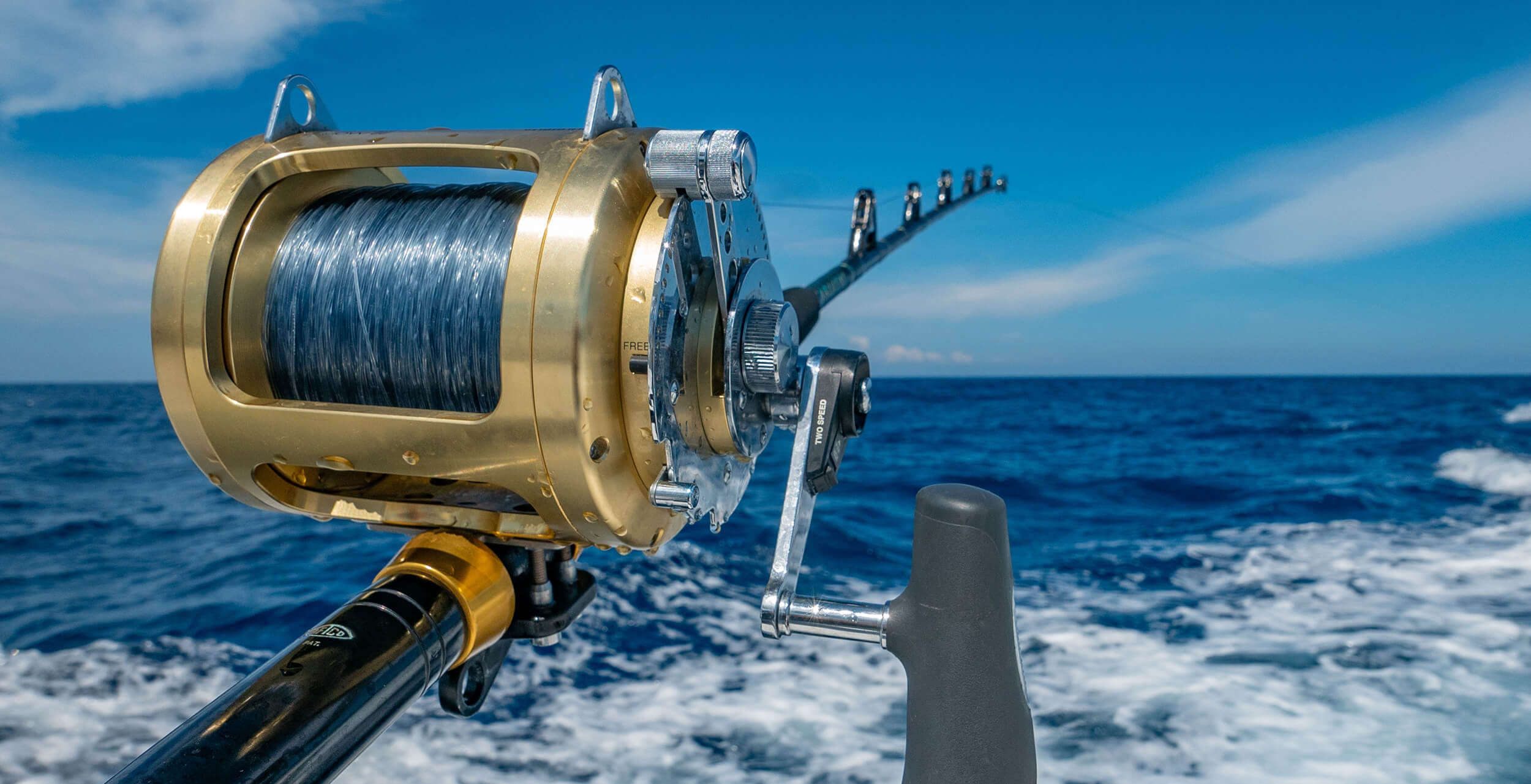
Inertialess reel
Some trolling enthusiasts still choose inertialess gear, which is quite justified for fishing at shallow depths. Firstly, they are usually cheaper (we don’t count premium lines). Secondly, if necessary, you can turn off the clutch and rewind in the usual manual mode, which is convenient when playing large specimens. In cartoons, the brake is always on.
And a little about the correct setting of the clutch. It must be tuned exactly to the weight of the bait, that is, it is advisable to use a weight of the appropriate weight. But, as a rule, it also has to be adjusted depending on the fishing conditions. With a weak setting, it will play off the line even with micro hooks, which is not uncommon when fishing at the bottom, with a tight one – it will not give up the line when diving on a dead hook, which can lead to blank breakage.
It is wise to take a powerful power model with a gear ratio of 1: 3 or 1: 4. The number of bearings is not less than 4-6, and one of them must be given for the line stacker. The spool must contain at least 100 m of line of the required diameter with a breaking load of 7-10 kg.
Fishing line
When buying a rod, you should immediately pay attention to the recommended line characteristics. When using a fishing line with an excess of the upper breaking load limit, the tackle may break, a less strong thread or cord will give an unreasonably large number of breaks. However, it can be used in supports where there is a very high probability of a dead hook – it is better to lose the bait than to break the rod.
In the overwhelming majority of cases, trollers tend to choose high-quality braids : they are at least twice as strong as monofilament of the corresponding diameter (minus the resistance to flow), and provide better contact with the bait. However, the cord, especially under overload conditions, strongly frays the rings (and frays itself). In addition, it practically does not have extensibility and is not able to fully extinguish the jerks of the fish, taking on part of the load. You can solve this problem with a Monofilament Shock Leader. This is especially true when trolling at high speeds, when fishing is carried out in vast areas.
Monofilament has good spring properties due to its extensibility and, at least, does not pull the bait out of the fish’s mouth. So with stiff, fast action rods, it is better to use a monofilament or at least supplement the line with the aforementioned shock leader.
In our conditions, one should not exclude the possibility that a decent-sized pike will flatter the bait, and it can attack with anticipation. Therefore, it is reasonable to supplement the rig with a metal leash of sufficient length (up to half a meter).
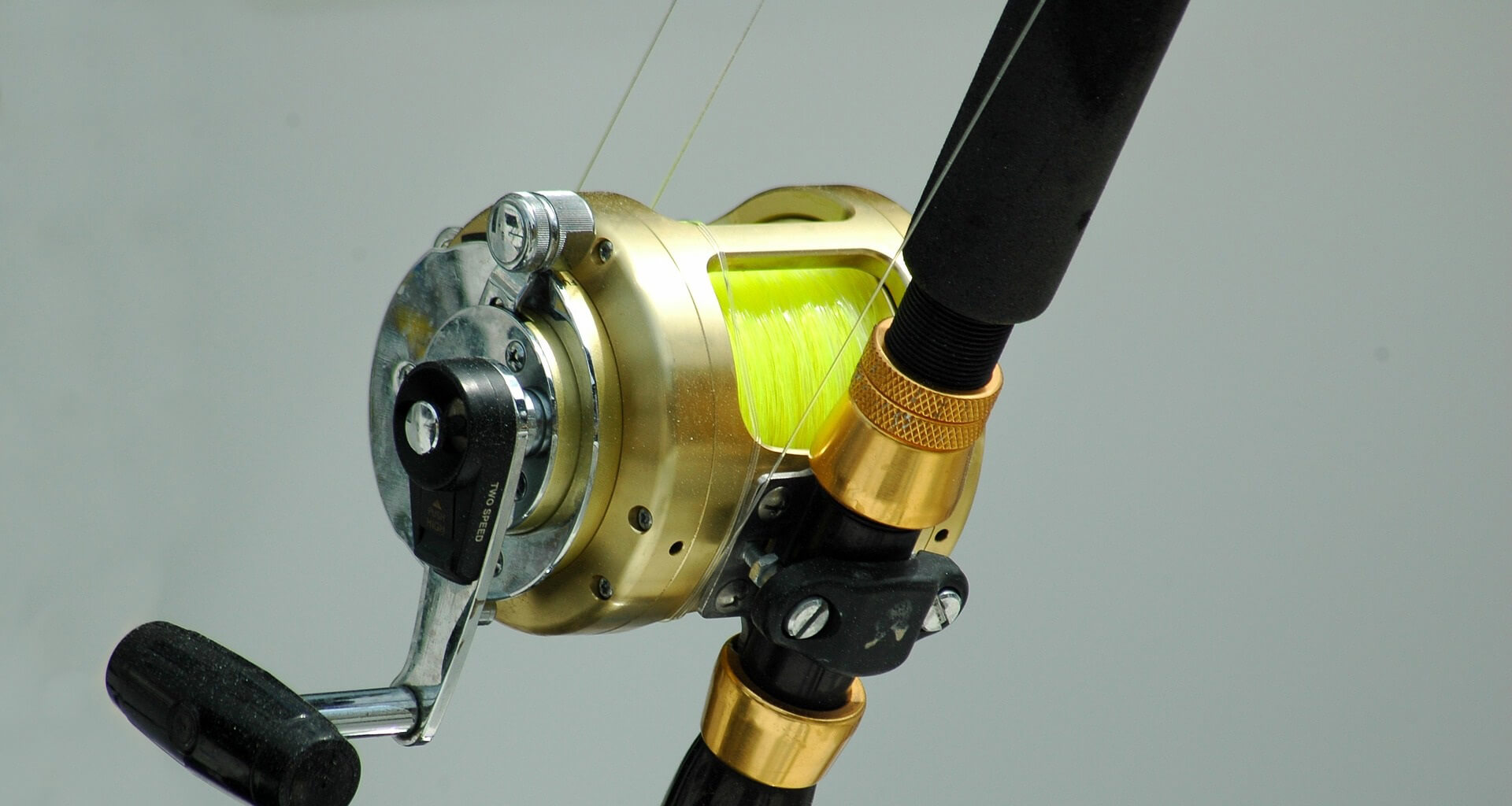
Bait
In this type of fishing, mainly artificial baits are used, but there are exceptions. For example, sometimes peaceful fish are trolled with the help of a bundle of worms or garlands of larvae, and the predator is offered a reliably fixed live bait. Of course, it remains live bait only at the beginning of the posting: even at low speed, it quickly turns into a dead fish.
But still, in the bulk of trolling fishing, it is concentrated around artificial lures, used both independently and with submersibles.
Wobblers
This is the main class of artificial trolling lures that a beginner should also focus on. It should be remembered that trolling wobblers are a separate class of lures that are not suitable for casting.
A good trolling wobbler holds the depth well, has its own animation attractive to the predator, which is set during uniform movement. This is determined by the aerodynamic characteristics of the bait, which are set by the shape of its body, weight and the configuration of the blade.
The most often used are special trolling minnows, pot-bellied cranks and shadows: they create powerful oscillatory movements that induce the predator to attack.
Medium and large “divers”, that is, sinking wobblers, have the right to life. It is rational to search for a predator using wobblers with different indicators of working horizons: for example, 6 m on one tackle and 2 m on another. Moreover, it is possible to deepen the wobbler with the help of a downrigger, which we will discuss below.
The configuration and color of the plug should resemble the representatives of the food supply habitual to the predator.
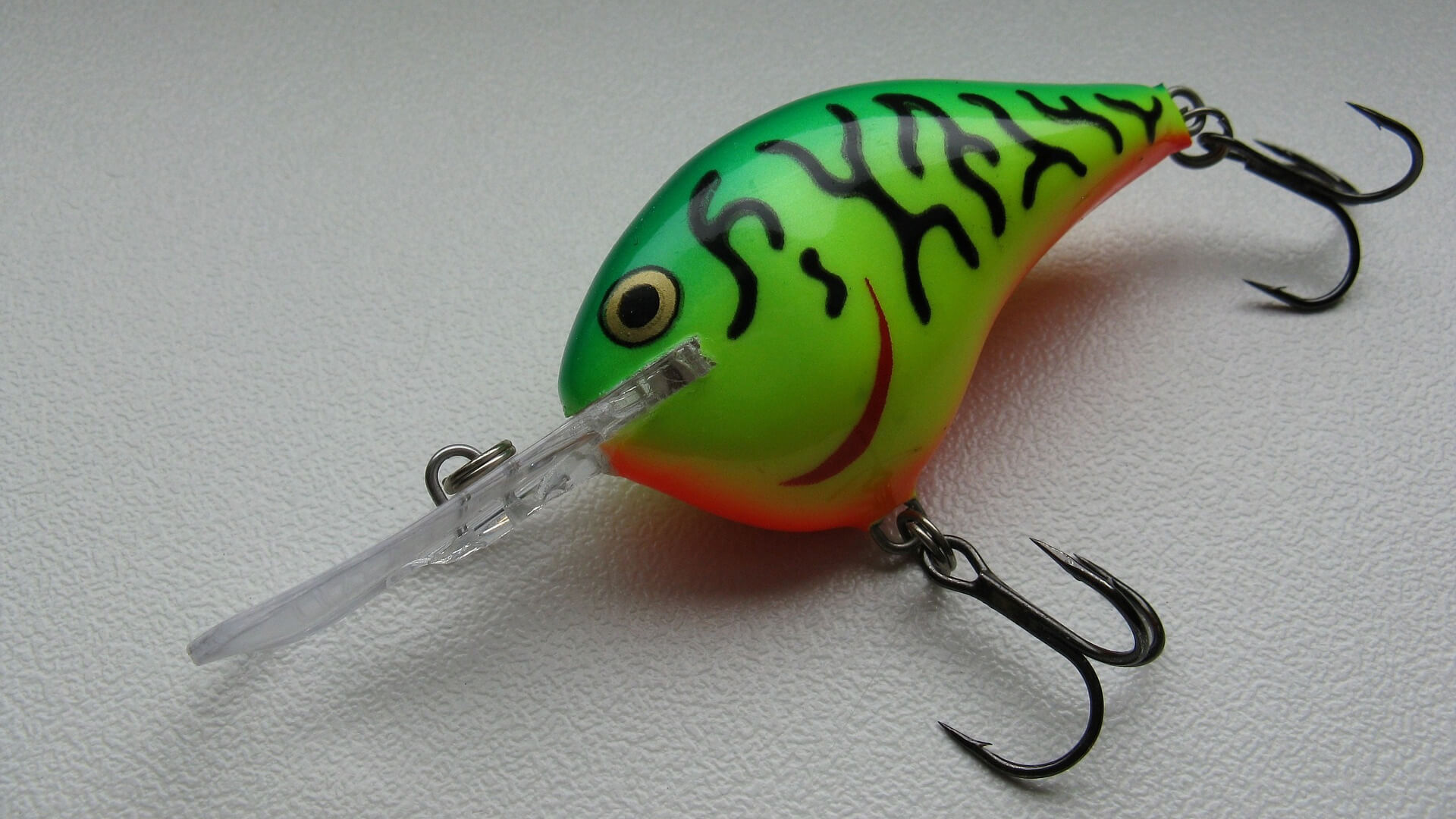
Spoons
To this day, trollers who prefer the good old iron are not extinct. The most often used are heavy narrow-bodied vibrators, to which the pike perch is especially partial. They go to a given depth due to their own weight and aerodynamics, not always needing depths.
There is a huge layer of classic trolling lures with a characteristic body shape. But there is also exoticism: these are legendary castmasters, medium jigs, Devons, who work especially well on asp.
Turntables, although they are designed only for uniform guidance, are used much less often in trolling fishing, since they literally jump out to the surface at speed. They can only be used with downriggers and other depths. The only exception is spinnerbait – a complex combination of a turntable, a jig head and all kinds of attachments.
Silicone baits
Large silicones look like a very attractive option for trolling. Their only drawback is their short life: delicate silicone seriously suffers from the teeth of a predator and often the bait can only be used once. The pike sometimes simply bites off the tail of the bait, leaving slightly dazed, but unharmed. Therefore, complete with a jig head, additional hinged tees or offset hooks are used, which are carried through the body of a silicone fish.
The rest is sheer advantages. To begin with, a long, run-through silicone fish gives a very attractive game that pike-perch or pike will not resist. It can be used with a jig head of any weight, choosing the optimal depth. In addition, silicone baits provide less grip than their aforementioned counterparts.
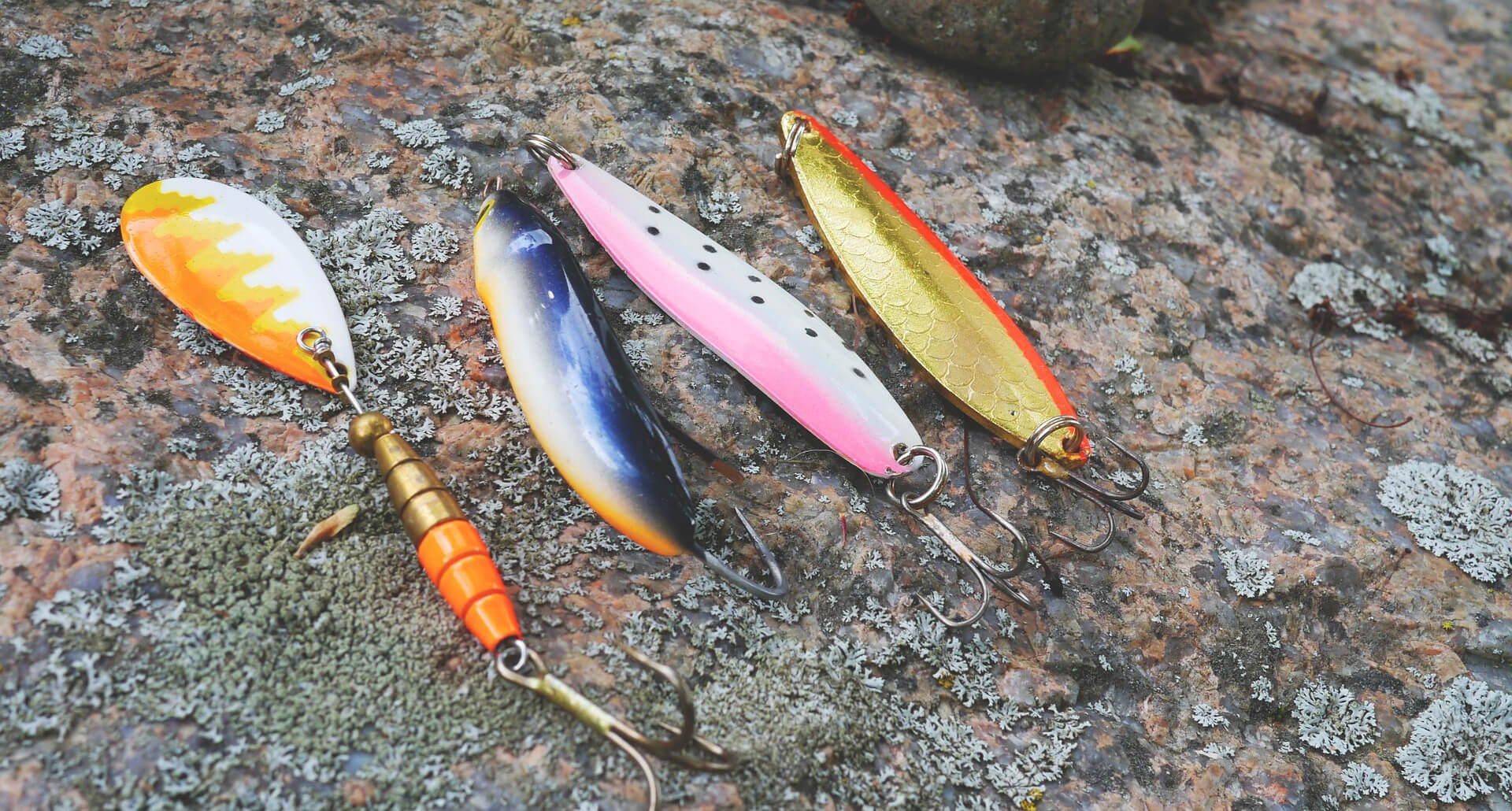
Floating craft
All types of boats are used for trolling on small reservoirs: both with a rigid hull (metal, wood, plastic) and inflatable (made of PVC). If the angler lives next to a pond, the choice is limited only by finances and the possibility of hanging the engine.
A PVC boat is more compact and mobile – no special trailer is required for its transportation, and it is inflated using an electric pump in a matter of minutes. You cannot install a powerful engine on an inflatable punt, but cruising speeds are not required for freshwater trolling. The only obvious disadvantage is vulnerability: the side or bottom in the heat of the fight against a predator can be damaged by the same hook.
Engine
The speed of the boat when trolling on small reservoirs and rivers is 3-6 km per hour, on a large lake or river – up to 7-10 km per hour. This is comparable to the speeds of a walking / running person.
For freshwater trolling, low-power engines (2.5-3 “horses”) are ideal, allowing you to comfortably explore the water area and fish at low speeds (from 2.5 km / h). Another important indicator is practicality (low fuel consumption, simplicity, ease of maintenance).
A good trolling engine does not roar, but purrs quietly without scaring the fish away. True, it takes a long time to get to the place of fishing, especially if the area of the reservoir is measured in tens of square kilometers.
Therefore, many experienced anglers install two engines at once: one for delivery to the fishing place, the second for the actual fishing. However, it is necessary to take into account the parameters of the watercraft, otherwise fishing will turn into a very risky event.

Additional equipment
In addition to the main one, you will need a whole range of additional equipment. Some positions from this list make it easier to navigate the water, others are designed to improve fishing conditions.
Let’s go through the main items, because each of them is an additional item of expenditure, which, under certain conditions, may not be required.
Deepener
The predator does not sit in one place and does not wait for you to feed the bait under his nose, however, exploration and fishing should be carried out at different horizons, that is, depths. The depth of the bait can differ significantly from that declared by the manufacturer: it is in direct proportion to the speed of the vessel, current and other parameters.
Trolling fishing is best done on several horizons with at least two tackles. To ensure the wiring in a given horizon and to avoid entanglement of the rig, various submersibles are often used. They can be roughly divided into three broad groups:
- Additional loads . These are the most primitive burrs installed directly on the rig. But you need to take into account that the greater the weight of the load, the worse the tackle works, so you should not overload the equipment.
- Divers . Before us are inexpensive devices that increase the resistance of the bait and thereby deepen it. They are based on flat platforms made of artificial polymers, mounted at the end of the main line (a leash with a bait is attached separately). It is difficult to achieve accurate penetration to a given horizon.
- Downriggers . These are stationary and rather complex devices attached to the boat. They are winch rods with ropes, on which loads of a given mass are suspended. Expensive models are equipped with counters and an electric drive. Downrigger is able to guide the bait exactly on a given horizon, and at very significant depths, but it is expensive and cumbersome.
Well, do not forget about a landing net or a hook, as well as a bag or cage for storing the catch.
Electronic devices
Trolling will never be effective if caught without looking at the picture of what is happening under water. Therefore, if fishing is not carried out on a small river or well-known water area, preliminary exploration of the relief is required. It will help to find the most promising places, as well as indicate bottom anomalies, passing over which is fraught with a catch.
The echo sounder will perfectly cope with preliminary reconnaissance of the water area, allowing you to detect promising places, measure depths and bypass unjustified risks.
But it is better to track the route with the help of the navigator : this will help you subsequently go along the planned course.
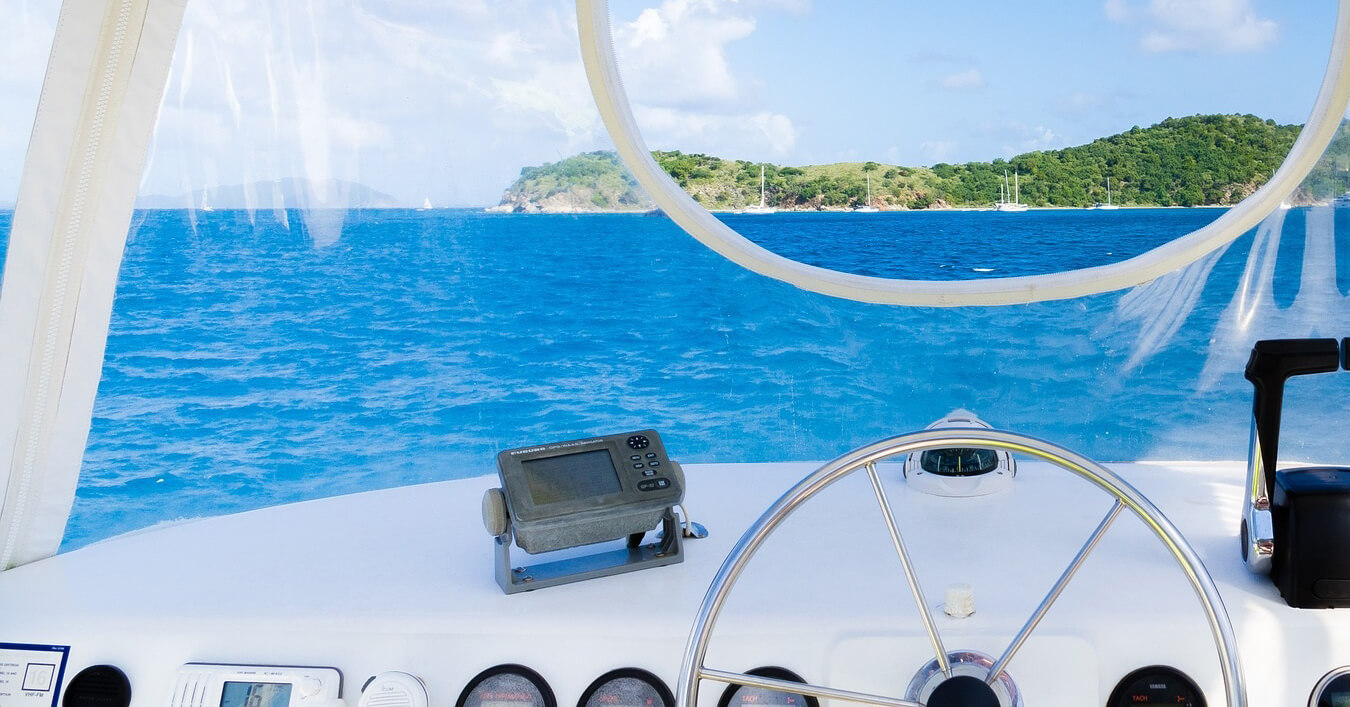
Other optional equipment
Among other additional equipment worth mentioning:
- Outrigger . This is an element overboard of the vessel that allows you to attach outboard equipment and tackle. When using an outrigger, you can spread the gear as wide as possible to avoid entanglement.
- Trolling Paravan . A special device (usually a triangular shape) that distributes the lures on one tackle horizontally. At the same time it can perform the function of a deepener.
- Rod holders . There are many options for holders. The choice of the optimal one depends on many factors: the number of rods, the characteristics of the boat, the budget. In particular, for inflatable boats, holders “cups” are more often taken, mounted to hard seats. On more serious hull boats, special metal racks are often installed, allowing you to fish with 5-7 trolling gear at the same time.
Search for a predator
As a rule, active fishing is preceded by an exploration stage. Sometimes trolling has a purely intelligence function in principle. First, with the help of a floating craft, several lures are carried out at different horizons, then a promising water area is fished for casting.
As a rule, trophy pike perch and pike prefer significant depths (especially the second). The pike sometimes favors thickets, driftwood and other shelters, so trolling along the borders of coastal vegetation, islets, driftwood and other anomalies may be promising. But the asp prefers to hunt near the surface, because the basis of its food base is a narrow-bodied top water.
Traditionally, the catch is the drop-offs, that is, the places of the depth difference between the edges, located along the channels and pits. And even a catfish can be found in a deep pool.
Trolling in shallow water (on the horizon up to 3 m) is good in the areas of rifts and oxbow bays, but you need to understand that with the onset of heat the fish tends to go to deeper depths.
On small rivers, trolls mainly along the floodplain, clinging to the dump. Fishing can be carried out both downstream and against it. In this case, it is necessary to focus on its speed so that the bait does not sag and does not accelerate too much.
Trolling tactics in different conditions
The actual fishing tactics are as follows:
- The craft begins to move and goes to the promising water area.
- The tackle is loaded with baits, regulated and cast in a fan-like manner.
- The rods are installed in racks, if necessary – through downriggers with a predetermined depth.
- The boat is moving, the baits are being towed at the specified depths under the control of the echo sounder.
- When biting, the fish is usually self-biting.
- The rod is removed from the rack, the fish is hauled out to the side.
Unlike coastal spinning, trolling does not require a particularly perfected skill. It is not required to aim the tackle at a long distance, skillfully animate the bait too. The skill of the angler lies in the fundamental preparation of the tackle and adjusting them to the conditions of fishing, steering the boat and playing trophies. It is also important to react to the holds in time by releasing the line and slowing the boat down.
The usual length of the cord outlet is 10-15 m, but you need to understand that it should be less on a small meandering river, and more on a vast clean water area and great depths. Make sure the boat turns smoothly, otherwise the rigs may get tangled or wrap around the propeller.
In shallow waters, there is a great chance to catch grass pike or perch. There it is better to use wobblers with a minimum penetration, vibrators or turntables. At more serious depths, where you can meet a large predator, fairly loaded silicones, medium and large wobblers, as well as oscillators with loading are good.
It is necessary to understand that the use of deep diving devices seriously changes the characteristics of the lure, and fishing at depths over 20 m without the use of a downrigger is very difficult.
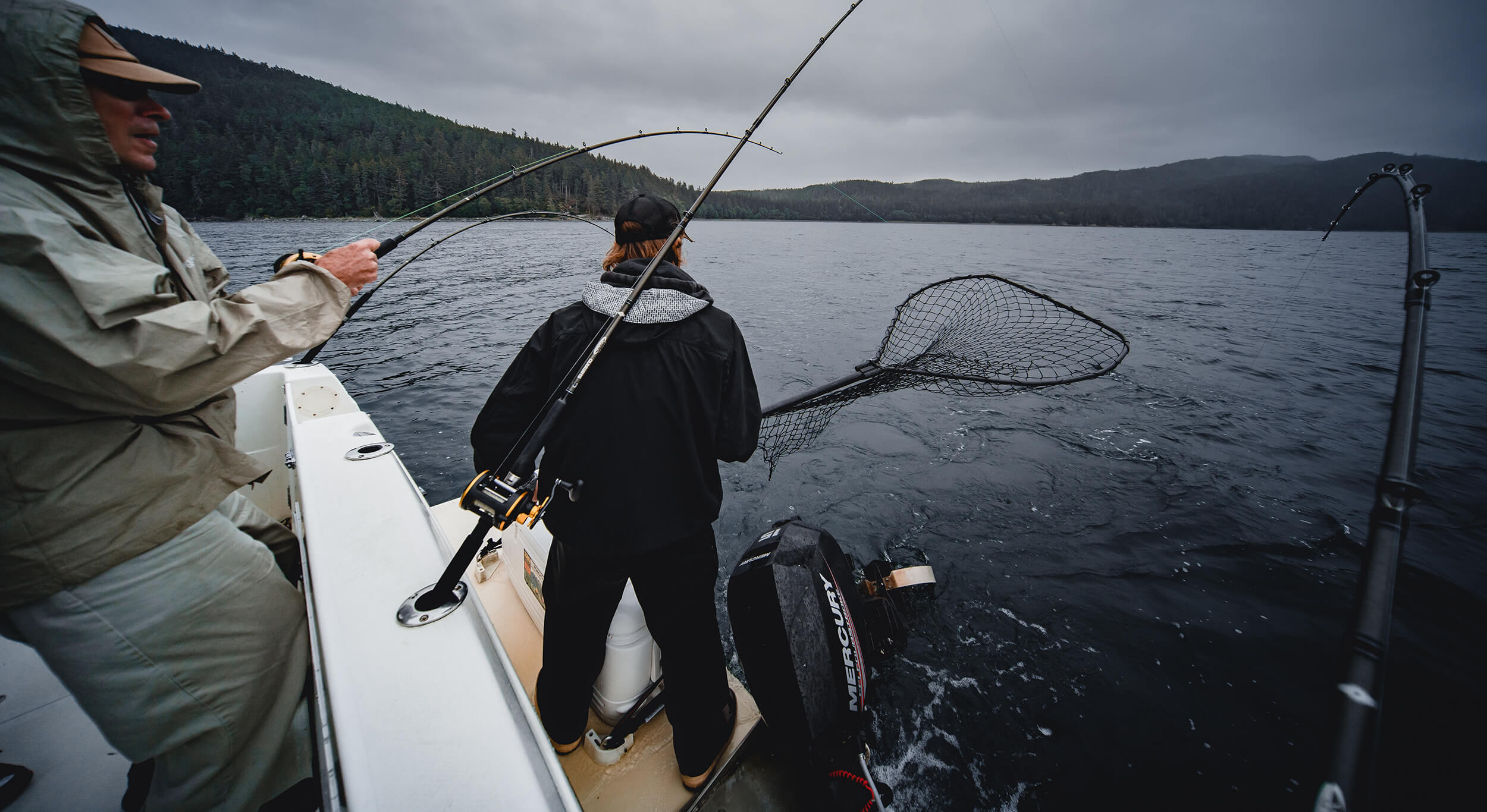
Tips for beginners
And in the end, as always, a few tips for novice anglers:
- Pay attention to reality . Despite the fact that trolling fishing is not considered poaching, it should be borne in mind that in some bodies of water it is prohibited. Moreover, any fishing from a boat during the period of spawning restrictions (they are individual for each region) is poaching.
- Adjust the driving speed . Changing the speed of the craft significantly affects the depth of the bait. And even a very hungry spring pike is unlikely to be tempted by a lure sweeping by – it simply will not have time. Therefore, if the boat is equipped with a powerful engine, it is better to slow it down with the help of special drift bags.
- Play with baits . None, even the most catchy bait, is universal. Therefore, you will have to experiment not only with speed and depths, but also with the actual baits. For example, in summer the pike is inactive and prefers smaller prey. So it is better to put large fat wobblers aside, preferring small minnows, silicones or iron to them.
- Use extra stimulation . Trolling can be supplemented by active fishing, especially if the boat is controlled by another angler or it goes independently through the free water area at low speed with a fixed rudder. The line can be reeled up, the rod can be lifted up in order to attract the fish with a kind of jig stage.
- Start under guidance . To begin with, it is better to ask for a company to experienced trollers, and then make a decision about purchasing your own equipment. Under their guidance, you will be able to comprehend the nuances of this amazingly effective type of fishing and understand if you are ready to invest in an expensive hobby.
Trolling is a great hobby for the strong and courageous. He may not be too athletic, but an adrenaline addict is definitely no less than a classic spinning fishing!

